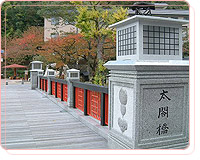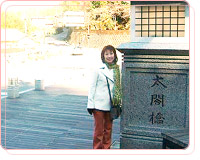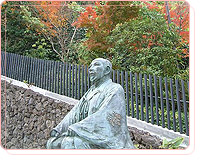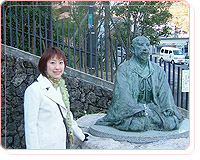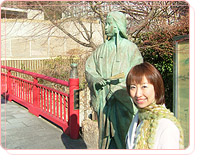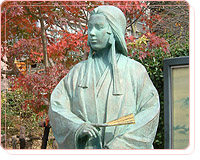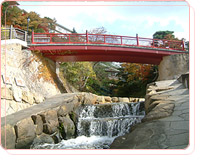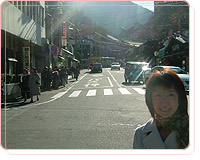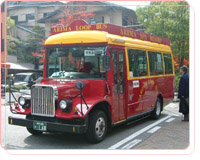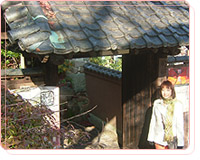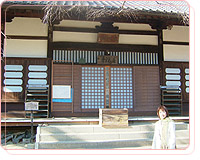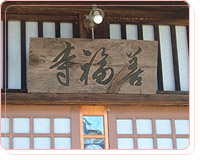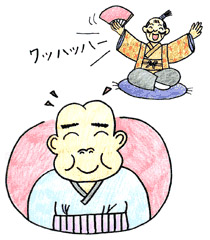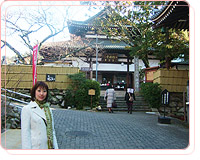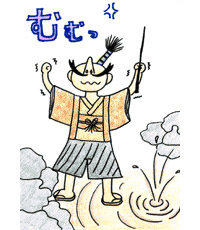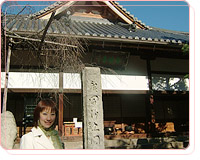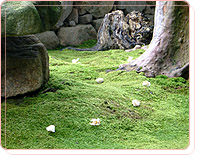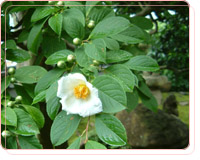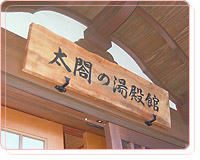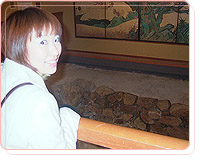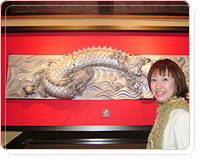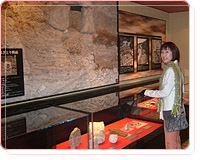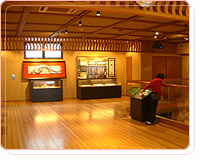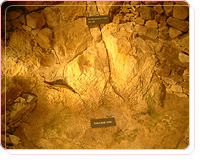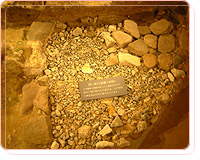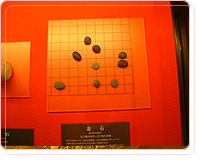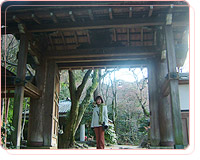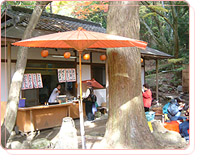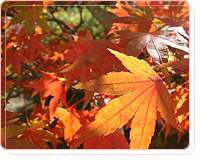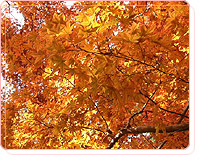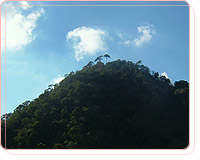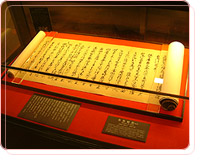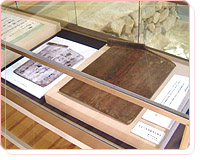|
[�g�b�v�y�[�W]�@[�ٓ��ē�]�@[�v�������]�@[���\��]�@[�X�^�b�t�Љ�]�@�m�L�n�i�r�n�@[���q�l�ɗD�����h]�@[�L�O���̂���`��] [����t���L]�@[����t�ʐ^��]�@[���X]�@[�ό����]�@[��ʃA�N�Z�X]�@�m���l�����@�n�@�m�L�n�̘̐b�n�@�m���y�Ɨ��j�n�@[�����N] |

|
�V�N�����܂��Ă��߂łƂ��������܂��B�����l�ŁA�L�n�i�r���S��ڂ̂��������}���邱�Ƃ��o���܂����B�{�N���A�����ǂ��������܂��悤�A�ǂ����X�������肢�������܂��B
�L�n�i�r�V�N���ł́A�u���}�G�g�̈������L�n����v�Ƒ肵�āA�G�g�ƗL�n����ɂ܂����j��ό��X�|�b�g�Ȃǂ����Љ�܂��B �܂��A11���ɃX�^�[�g���܂����p���Ńz�[���y�[�W���[��������悤�w�߂Ă��܂����A����́A�u�L�n�̔N���s���v���p�܂����̂ŁA���Љ�܂��B1000�N�ȏ�̗��j������L�n����ł́A�l�G�܁X�ɐF��ȓ`���s�����Â���܂��B���j�I�ȉ����Ɗ��C�ɂ��ӂꂽ�X���݂̎U������Ђ��y���݂��������B����t�X�^�b�t�ꓯ���҂��\���グ�Ă���܂��B "Ryuusenkaku" web site in English Happy New Year! Thank you for visiting our web site. We publish a monthly newsletter �gArima Navi�h on this web site featuring hot topics for sightseeing in the Kobe, Mt. Rokko, and Arima Onsen areas. With its history spanning over 1000 years, Arima Onsen has traditional ceremonies corresponding to the colors of each of the four seasons. To augment the information offered on our English homepage begun in November, we have translated a Calendar of Annual Ceremonies in Arima Onsen. In this issue, we will introduce Arima's sightseeing spots in connection with Toyotomi Hideyoshi (Taiko Hideyoshi), the feudal ruler who unified Japan in 1590, and annual events in Arima. |
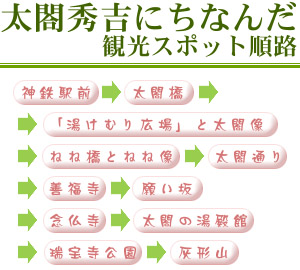 |
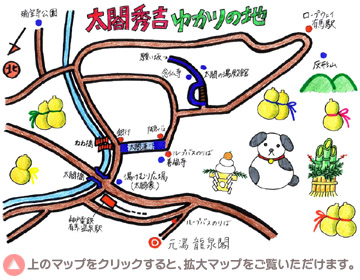 |
|
1)12���I�̖����ɁA�L�n�����̑c�ƌĂ�鍂�m�u�m���i�ɂ��j�v���L�n�̍ċ��ɐ������Ă���A�L�n�ł͑ו��̓��X�������A�������ォ��퍑����ɂ����đS���Ő헐���������ł��A�a�⏝�̗×{�̂��ߓ����ɖK���҂͓r�₦�邱�Ƃ��Ȃ��A�L�n�̔ɉh�������Ă��܂����B
2)�Ƃ��낪1528�N�ɕ��a�ȕۗ{�n����Ɍ������A�L�n�͏œy�Ɖ����܂����B����ɁA1545�N�ɂ́A�O�؏��̕ʏ��L��炪�L�n����̒������ɂ��闎�t�R����R�ōU�߂��܂ɗL�n������傫�ȑŌ����܂����B�܂��A1576�N�ɂ��������A�L�n����͍ċN�ł��Ȃ��܂܁A����������Ă��܂��܂����B 3)���q���G�A�ēc���ƁA�D�c�M�F�ƃ��C�o�������X�Ƒł��j���ēV������̖ړr������1583�N�ɁA�G�g�͎n�߂ėL�n�����K��A���炭��������Ŕ�ꂽ�S�g��L�n�̖����Ŗ����܂����B���ꂪ�L�^�Ɏc��ŏ��̏G�g�̗L�n�����ŁA���̌���ĎO�L�n��K��āA�L�n����̕����ɑ��Ă��܂��܂ȉ������s���܂����B 4)�G�g�̎��ւœ��M���ׂ����Ƃ́A1597�N�Ɏn�܂�����K�͂Ȑ̉��C�H���ł��B�O�N�ɋߋE��~���P�����c��������n�k�ɂ���ėL�n�̌������r��Ȕ�Q��ւ�܂������A����ȏ�̖��́A���̒n�k�̒��ォ�牷��̉��x���}�㏸���M���ƂȂ��Ă��܂������Ƃł����B�L�n����̓������ʂ��n�m���Ă����G�g�́A���{�I�ȉ��C�H���ɒ��肵�܂����B 5)���C�H������������1598�N5���ɓ����̗\��ł������A���������J�̂��ߒ��~�ƂȂ�A���̌�܂��Ȃ����ɕ������N��8��18���ɖv�������߁A�G�g�͂��ɂ��̐��ʂ����邱�Ƃ��ł��܂���ł����B�������A�G�g�̑���C�����̌�̗L�n�̔ɉh�ɑ傢�Ɋ�^�����ƌ����A�G�g�͗L�n����̑剶�l�Ƃ��č��ł�����Ă��܂��B Hideyoshi and Arima Onsen Renowned for its therapeutic baths, the Arima spa resort area is one of the oldest and most prominent spas in Japan. First mentioned in Japan�fs oldest history book �hNihon Shoki,�h written in 720 A.D., the mineral baths of Arima were popular with Toyotomi Hideyoshi, the feudal ruler who unified Japan in 1590. He was also called "Taiko" Hideyoshi. This honorific title was given to a resigned Kanpaku, the highest rank of the Emperor's retainers, and often referred to Hideyoshi since he was quite famous for his success in being promoted from the lowest rank of Oda Nobunaga's infantry to the Kanpaku. Thanks to the efforts of Hideyoshi and his wife Nene, the areas of Arima Onsen recovered from the serious damage incurred by repeated disasters such as big fires in 1528 and 1576, a war in 1545, and a major earthquake in 1596. Today, these hot springs continue to be a favorite holiday destination with Japanese and overseas tourists alike. |

|

|

|

|

|

|

|

|

|

|

|

|
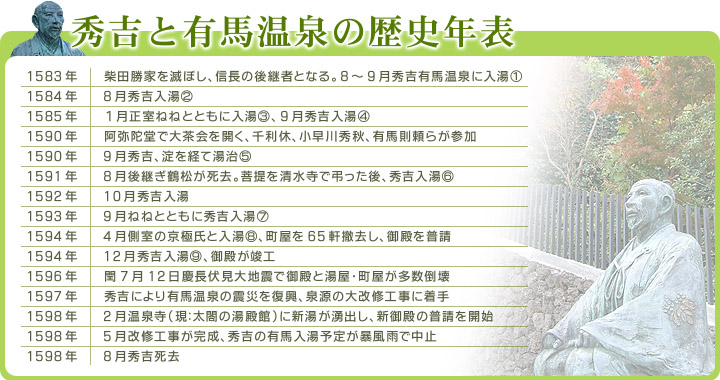
| �����F�����Ŋm�F���ꂽ�G�g�̗L�n�����͇@�`�H�ł��� |

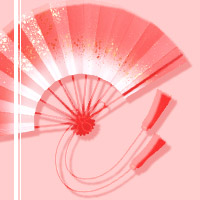
|

|
||||||
 |

|
|||||
 |

|
|||||
 |

|
|||||
 |

|
||||||
 |

|
||||||
 |

|
||
 |

|
|||||
 |
�L�n�i�r�V�N���ł́A�L�n����̑剶�l�ł��鑾�}�G�g�ɂ��Ȃό��X�|�b�g�����Љ�܂����B�����ł́A2��16���ɐV���ɐ_�ˍ`���ɃI�[�v������_�ˋ�`�ɂ��ē��W���܂��B�_�ˁ`�L�n������z���������B(2005/12/26) |
| Sightseeing spots associated with Toyotomi Hideyoshi are covered in the latest edition of the Arima Navi. In the next edition, we will feature information about the Kobe Airport located offshore from the Kobe Port and scheduled for opening on February 16, 2006. (Dec 26, 2005) |
�����̃y�[�W�͂Q�O�O�U�N�P���ɔ��s���ꂽ���̂ł��B
�ŐV�̗L�n����Ǝ��ӊό��n�̏����w����t���L�x���������������B

 �@�@
�@�@
|
